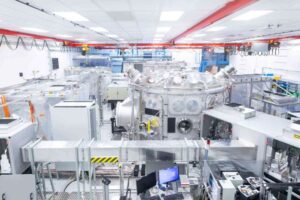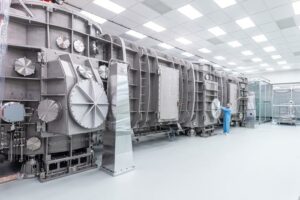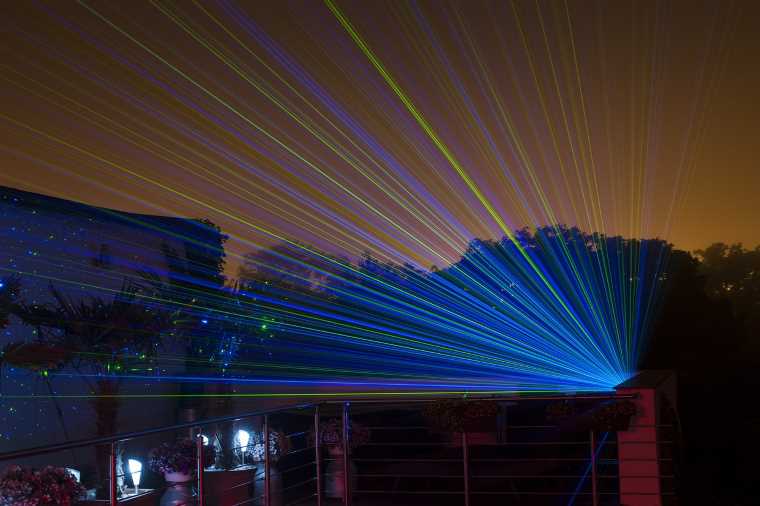University of Rochester scientists are exploring the mysteries of quantum theory to harness ultra-high energy gamma rays to produce the most powerful laser ever built. Previous efforts have successfully created functioning laser beams at various light energies, including lasers in the visible, ultraviolet, and even X-ray spectra. However, this would be the first time that light energy at the highest end of the spectrum beyond x-rays, namely gamma rays, has been controlled enough to create a functionally coherent laser beam.
If successful, the National Science Foundation-funded (NSF) effort could lead to higher-resolution imaging technologies, the ability to probe quantum states like never before, or even a long-desired gamma-free electron laser. Harnessing light energy at this high end of the spectrum could also help create a weapons-grade gamma-ray laser that contains even more destructive energy than the most powerful laser weapons currently in development.
“The ability to make coherent gamma rays would be a scientific revolution in creating new kinds of light sources, similar to how the discovery and development of visible light and x-ray sources changed our fundamental understanding of the atomic world,” explained Antonino Di Piazza, a professor of physics at the University of Rochester and a distinguished scientist at the University’s Laboratory for Laser Energetics, who is the lead investigator on the NST grant.
ELI Beamlines Will Help Develop Most Powerful Laser Ever
To explore beam coherence at the high-energy states, Di Piazza’s team is coordinating with colleagues from ELI Beamlines in the Czech Republic. According to that organization’s website, the ELI Beamlines Facility “is a leading laser research centre and part of The Extreme Light Infrastructure ERIC, pan-European research Infrastructure hosting the world’s most intense lasers.”


Most importantly, the facility is home to four “leading-edge, high-power femtosecond lasers” capable of reaching “unprecedented intensities.”
“ELI Beamlines offers to its users unique femtosecond sources of X-rays and accelerated particles,” they explain. “These beamlines enable pioneering research not only in physics and material science but also in life science, laboratory astrophysics, (and) chemistry with strong application potential.
In the case of the University of Rochester’s NSF-funded effort to explore the coherence properties of gamma rays, the ELI Beamlines facility will give the researchers the unique ability to study how fast-moving electrons interact with lasers to emit useable high-energy light.
According to the press release announcing the study, the team will start by examining how just one or two electrons emit light under these circumstances. As the project progresses, the team will try to scale up to many electrons until they successfully produce coherent gamma rays.


Novel Effort Will Integrate Quantum Electrodynamics Theory
While success in the endeavor would be a first, the researchers note that their project will build on previous research in this area. This includes efforts by the SLAC National Accelerator Laboratory at Stanford University, the European XFEL in Germany, and Japan’s SACLA. However, unlike those efforts, this research will delve into the behavioral dynamics of quantum theory.
“We are not the first scientists who have tried creating gamma rays in this way,” says Di Piazza. “But we are doing so using a fully quantum theory—quantum electrodynamics—which is an advanced approach to addressing this problem.”
While potential applications of this research are likely still years away, the team believes their work could offer the scientific community a significant tool for developing a new class of powerful lasers, including the most powerful laser ever built. The team also hopes that their work could help make the case for the planned NSF OPAL high-power laser user facility at the University of Rochester. Similarly funded by the NSF and led by Di Piazza, that laser facility “has the potential to be a unique open-access resource for the global scientific community.”
As for the team’s loftiest goals, DI Piazza believes that their research could help achieve something that has also remained out of reach: the broader scientific community’s long-stated goal of producing a gamma-free electron laser. Such a device could accomplish imaging, scanning, and analysis capabilities even the world’s most powerful lasers cannot offer.
“Of course,” Di Piazza says, “step one is to show that the science is possible before building such a device.”
Christopher Plain is a Science Fiction and Fantasy novelist and Head Science Writer at The Debrief. Follow and connect with him on X, learn about his books at plainfiction.com, or email him directly at christopher@thedebrief.org.

